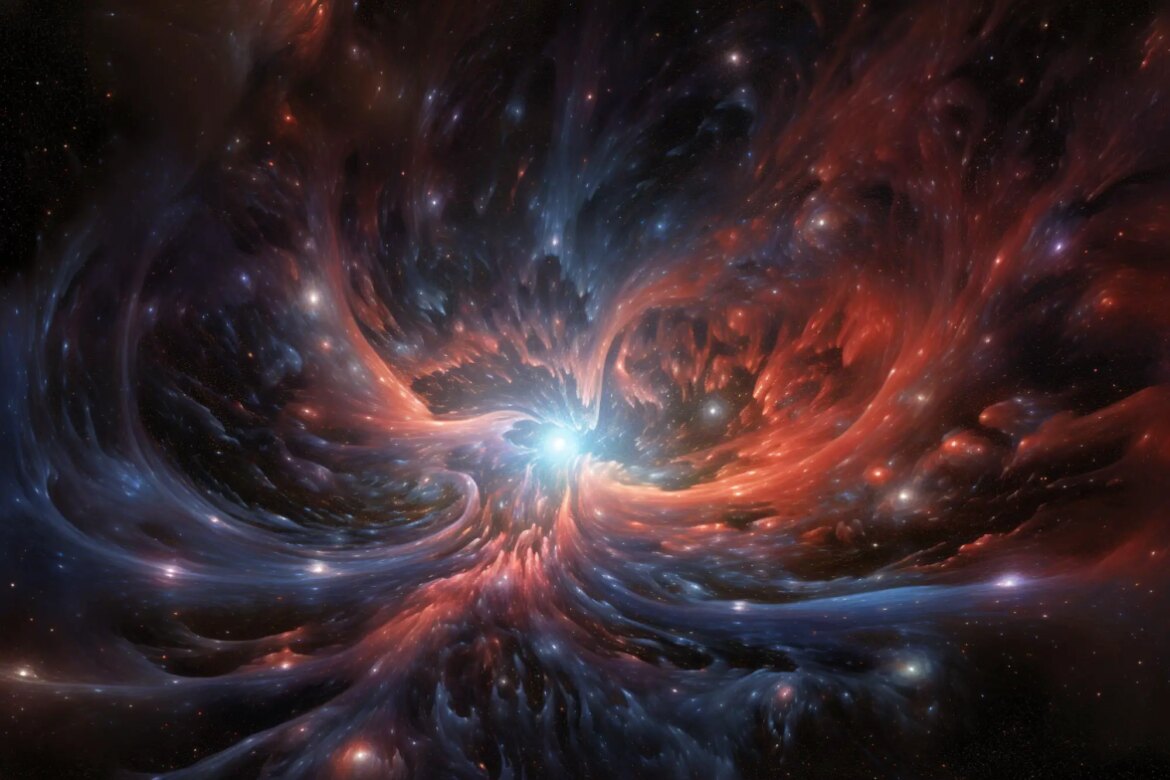Columbia scientists have discovered that the universe’s magnetic fields might have their roots in turbulent plasma. The research indicates that these plasmas, present in various settings, can independently form and enhance magnetic fields. This uncovers how these fields can span incredible lengths.
The origin of magnetic fields has been a subject of continual discussion and examination. Recent research provides insights into their beginnings.
Magnets aren’t confined to your refrigerator. They exist within the Earth, stars, galaxies, and even the vast space between galaxies. As researchers have explored more regions across the universe, they have found magnetic fields everywhere. Yet the reason for this occurrence and the true origin of these magnetic fields has remained a baffling and frequently explored scientific question.
A depiction of the magnetic field in the Whirlpool Galaxy (M51) was caught by NASA’s Stratospheric Observatory for Infrared Astronomy (SOFIA), layered over a Hubble telescope image of the galaxy. The picture exhibits infrared depictions of dust grains in the M51 galaxy, whose magnetic alignment mainly coincides with the galaxy’s spiral form, but also appears drawn towards the neighboring galaxy on the frame’s right. Credit: NASA, the SOFIA science team, A. Borlaff; NASA, ESA, S. Beckwith (STScI), and the Hubble Heritage Team (STScI/AURA).
Table of Contents
Understanding the Birth of Magnetic Fields
A scientific paper by Columbia’s team gives a glimpse into the genesis of these magnetic fields. Through modeling, they demonstrated that magnetic fields might spontaneously emerge from turbulent plasma.
Plasma is a form of matter commonly found in extreme heat conditions, like near the sun’s surface. Still, it is also dispersed throughout the universe in places of low density, such as the vast space between galaxies; the study concentrated on these lower-density areas.
The team’s simulations reveal that turbulent plasmas not only create new magnetic fields but can also enhance existing ones once formed. This clarification helps in understanding how magnetic fields, originating on a minor scale, can eventually spread across enormous distances.
A synthesized image showcases the creation and evolution of magnetic fields in turbulent plasmas, from weak fields on a small scale (top left) to potent fields on a broader scale (bottom right). Credit: Columbia University.
The research paves the way for a new understanding of where magnetic fields might form, even in the universe’s most remote and unspoiled regions. Turbulent movements of plasma particles can naturally give rise to new magnetic fields, says Sironi.
The lengthy quest for the initial ‘seed’ that can foster a new magnetic field is progressing, and the researchers are thrilled to provide fresh proof of this initial source and information on how a magnetic field can expand once created.
Reference: “Generation of Near-Equipartition Magnetic Fields in Turbulent Collisionless Plasmas” by astronomy professor Lorenzo Sironi, astronomy research scientist Luca Comisso, and astronomy doctoral candidate Ryan Golant, 31 July 2023, Physical Review Letters. DOI: 10.1103/PhysRevLett.131.055201.
Frequently Asked Questions (FAQs) about turbulent plasma
What is the primary focus of the research conducted by Columbia researchers?
The primary focus of the research conducted by Columbia researchers is to understand the origin of the universe’s magnetic fields. They discovered that turbulent plasma might be the source, as it can spontaneously create and amplify magnetic fields, helping explain how these fields can stretch across immense distances.
Where can turbulent plasma be found, and why is it significant?
Turbulent plasma can be found in ultra-hot environments like near the surface of the sun and in low-density environments such as the expansive space between galaxies. It is significant because it can independently form and enhance magnetic fields, and the research focused on understanding this phenomenon particularly in those low-density environments.
How does the study contribute to our understanding of magnetic fields in the universe?
The study contributes by providing insights into how magnetic fields may spontaneously arise and be amplified in turbulent plasma. It demonstrates that even in the most remote spaces of the universe, turbulent plasma particles in motion can give birth to new magnetic fields. This helps clarify how magnetic fields that originate on small scales can eventually spread across vast distances.
What methods did the researchers use to come to their conclusions?
The researchers used models and simulations to show that magnetic fields might spontaneously emerge from turbulent plasma. By focusing on low-density environments and understanding how turbulence in those plasmas can create and amplify magnetic fields, they were able to uncover new evidence of the origin and growth of magnetic fields in the universe.
Who authored the paper, and where was it published?
The paper titled “Generation of Near-Equipartition Magnetic Fields in Turbulent Collisionless Plasmas” was authored by astronomy professor Lorenzo Sironi, astronomy research scientist Luca Comisso, and astronomy doctoral candidate Ryan Golant. It was published on 31 July 2023 in Physical Review Letters.
More about turbulent plasma
- Columbia University
- Physical Review Letters
- NASA’s Stratospheric Observatory for Infrared Astronomy (SOFIA)
- Hubble Space Telescope



5 comments
I think this discovery is incredible! It’s amazing to think that something as complex as the universe’s magnetic fields can be traced back to turbulent plasma, gives you a lot to ponder on.
I used to study astronomy in college, and this kind of research just blows my mind. The images they’ve captured are stunning, and the way they’ve uncovered these magnetic fields. Science at its best!
turbulant plasma? sounds like a sci-fi movie. But jokes aside, this is fascinating. Science never ceases to amaze.
I’m a bit lost with all the scientific jargon, but it’s interesting to see what’s happening in space research. great stuff
Wow, this is really eye-opening! Never thought that plasma would have such a significant role in magnetic fields. does anyone know where i can read more?